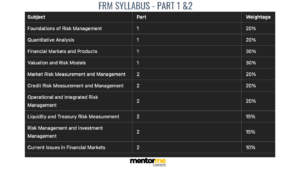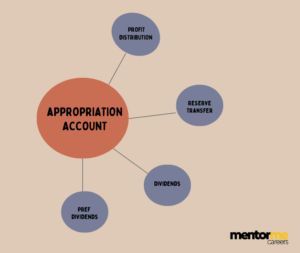Last updated on February 12th, 2024 at 12:32 pm
Imagine you were working for a client in a country other than yours. For instance, lets say your client is in the U.S, and you are an Indian citizen. So, you are due to recieve $1000, but suddenly inflation in U.S increases making the dollar become cheaper i.e instead of INR 80 Per dollar, now its INR 75. Although, you might say, isn’t that a good thing? Well, patriotically it is. However, from a foreign exchange risks perspective, it means you get lesser INR.
Foreign Exchange Risk Example
Let’s say an Indian company provides IT services to U.S companies, and all the payments are made to the Indian company in Dollars. On 25th January 2020, the INR/USD rate was at INR 70. The U.S company has to pay 200 Hrs worth of billing to the Indian company on 15th Feb 2020. The INR/USD rate is expected to increase to INR 65 /USD on interest rates being dropped.
So, notice first who faces the risk?
- The Indian company faces the risk of receiving lower INR if the rate appreciates to INR 65.
- Total billing is still the same. 200 Hrs x 100(Per HR $ Billing rate)= $20000, but the conversion will lead to INR 13 Lacs instead of INR 14 Lacs.
- The prospective INR 1 Lac is nothing but foreign exchange risk.
Foreign Exchange Risk?
Foreign exchange risk, also known as the exchange rate risk, is the risk of financial impact due to exchange rate fluctuations. In simpler terms, foreign exchange risk is the risk that a business’s financial performance or financial position will be impacted by changes in the exchange rates between currencies. Foreign exchange risk is a major risk to consider for exporters/importers and businesses that trade in international markets. There are three types of foreign exchange risk, and they include transaction risk, economic risk, and translation risk.
Understanding Foreign Exchange Exposure
Risk occurs when a company engages in financial transactions or maintains financial statements in a currency order than where it was headquartered. For example, a company based in Australia that does business in Canada – i.e., receives financial transactions in Canadian dollars – reports its financial statements in Australian dollars is exposed to foreign risk. The Canadian dollars received must be converted to Australian dollars before writing the company’s financial statements. Changes in the exchange rate between the CAD and AUD would be the risk, hence the term foreign exchange risk.
Types of Foreign Exchange Risks

There are three types of Foreign Exchange risks. They include:
- Transaction Risk:
Transaction risk is faced by a company when making financial transactions between jurisdictions. The risk is the change in the exchange rate before the transaction settlement. The transaction risk can be mitigated using forward contracts and options.
- Economic Risk:
Economic risk, also known as forecast risk, is the risk that a company’s market value is impacted by unavoidable exposure to exchange rate fluctuations. Such a type of risk is usually created by macroeconomic conditions such as geopolitical instability and/or government regulations.
For example, an Australian furniture company that sells locally will face economic risk from furniture importers, especially if the Australian currency unexpectedly strengthens.
- Translation Risk:
Translation risk, also known as translation exposure, refers to the risk faced by a company headquartered domestically but conducting business in a foreign jurisdiction, and of which the company’s financial performance is denoted in its domestic currency. Translation risk is higher when a company holds a greater portion of its assets, liabilities, or equities in a foreign currency.
For example, a parent company that reports in Australian dollars but an overseas subsidiary based in Canada face translation risk, As the subsidiaries, financial performance is in Australian dollars is translated to Canadian dollars for reporting purposes.
Causes of FX Risk
Foreign exchange (FX) risk is the risk of an investment’s value changing due to changes in currency exchange rates. There are several causes of FX risk, including:
- Economic and political events: Economic events such as interest rate changes or political events such as elections or war can cause currency values to fluctuate.
- Market speculation: Currency speculators can buy and sell large amounts of a currency, causing its value to fluctuate.
- Interest rate differentials: If the interest rate in one country is higher than another, investors may move their money to the country with the higher interest rate, causing the currency to appreciate.
- Balance of payments: A country with a large trade deficit or high level of debt may see its currency depreciate as investors lose confidence in its economic stability.
- Currency intervention: Central banks may intervene in the currency market by buying or selling large amounts of a currency to try to influence its value.
- Natural disasters: Natural disasters such as hurricanes, earthquakes and pandemics can disrupt trade and cause currency values to fluctuate.
- Technology advancements: Advancements in technology and communication have led to increased trading and investment opportunities, leading to more volatility in currency exchange rates.
Foreign Exchange Risk Management Techniques
Mitigation of foreign exchange risk is a key risk management objective in the investment context. There are multiple ways of mitigating this, some of which are
- Going Short the Currency: For example, if we invest in India as a U.S investor in a publicly listed company. We of course, want to take exposure to the upside of the company we invested in, but we don’t want the currency risk. So we could sell INR Equivalent to the amount of investment we have done in the stock.
- SWAPS: These are niche products, but SWAPS in bonds of foreign countries can give us the option for cashflows in either domestic or foreign currency
Case Study on FX Risk
One example of a foreign exchange (FX) risk case study is the impact of the U.S.-China trade war on currency exchange rates. In 2018, the United States began imposing tariffs on Chinese imports, which led to a decline in the value of the Chinese Yuan against the U.S. Dollar.
As the trade war escalated, companies that did business with China were hit hard by the falling Yuan. For example, a U.S. company that imports goods from China and sells them in the United States would have to pay more for the goods in Yuan, but would not be able to charge more for the goods in U.S. dollars, leading to a decline in profits.
Similarly, a Chinese company that exports goods to the United States would have to charge less in U.S. dollars for their goods, leading to a decline in revenues.
Furthermore, some investors also pulled out of emerging markets as a result of the trade war, causing the currencies of other countries to depreciate as well.
Moreover, the trade war also created uncertainty in the global markets, causing investors to pull their money out of riskier assets and into safer ones such as the U.S. Dollar and the Japanese Yen, causing the value of those currencies to appreciate.
In summary, this case study demonstrates how a political event such as a trade war can cause significant fluctuations in currency exchange rates and have a negative impact on companies and investors that are exposed to FX risk.
Conclusion
In summary, FX risk can be caused by a variety of factors including economic and political events, market speculation, interest rate differentials, balance of payments, currency intervention, natural disasters, and technology advancements.




